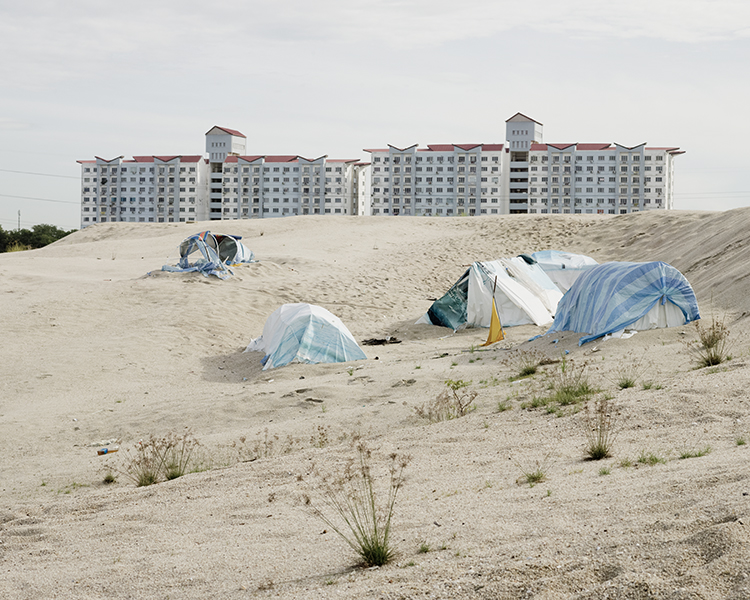
In an exhibition curated by Roger Hopgood, seven photographers are brought together whose work seeks to reveal something unknown or unseen. Photographic projects can often take the form of a quest of some kind, where the photographer aims to locate and make concrete something elusive, invisible or overlooked. In the work of each of these photographers, place and landscape are significant themes, with this often involving a journey to a specific location. In James Dobson’s Barrow series, ancient burial mounds are captured. These gently contoured hills are easily read as natural features of the landscape but once we become aware of the subject of Dobson’s series, we begin to feel an atmosphere within the work that speaks of endurance and the passing of time. David Gibson’s Lost Zone – Chernobyl series delivers the kind of dark charm that we associate with contemporary ruin. Places of work and recreation have been brought to a standstill and we ponder the presence of the invisible contaminant that has caused this. In the work of Stella Trench, the object of scrutiny is more local. In her series, she follows the course of a ‘forgotten’ canal in Kent. The Thames and Medway Canal was a failed project from its beginning, and after its closure in 1934 has descended into a state of ‘invisibility.’ For Raz Talhar, the subject of his work is unnoticeable in a different way. Talhar records the process of land reclamation in Malaysia. Although visible, both during its construction and after, the new land, once established, takes on the demeanour of having always been there; its presence is absorbed into the existing landscape. Karin Wach makes a different response to the place she is investigating. In trying to make sense of the transformation of Bankside Power Station into the Tate Modern, she builds collaged constructions that convey the idea of a driving force. This might refer to the machinery that was once housed here, or alternatively might refer to the mechanics of change and development. Roger Hopgood’s landscape work often features an uneasy relationship between ‘nature’ and technology. In 3G Hinterland, he travels through the Wye Valley searching for dead zones in the cell phone network. The Picturesque, from its inception, sought an escape from industry and development, and what is playfully pursued in this work is ‘nature’ in a more intact form. Nicole Talliss’ landscapes have not involved a physical journey. With the appearance of polar exploration, they are in fact small-scale constructions, which Talliss relates to Freud and the unconscious. What we see in the work resembles an iceberg, an object that has often been used to convey the significance and potency of that which lies beneath the surface.
